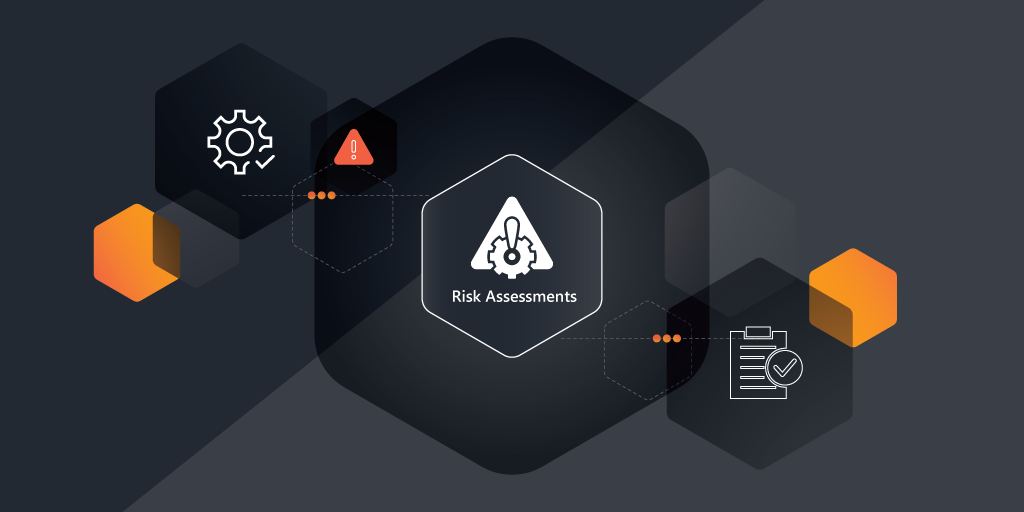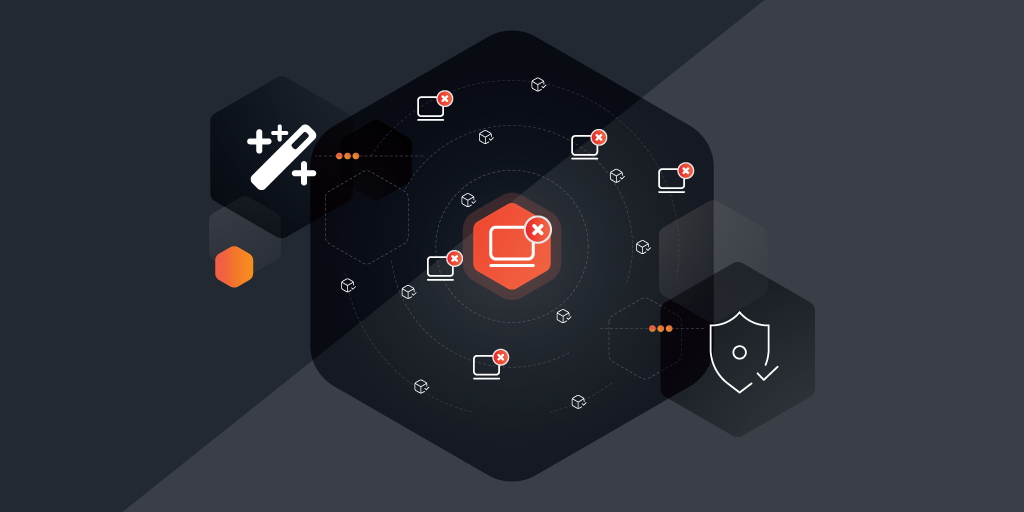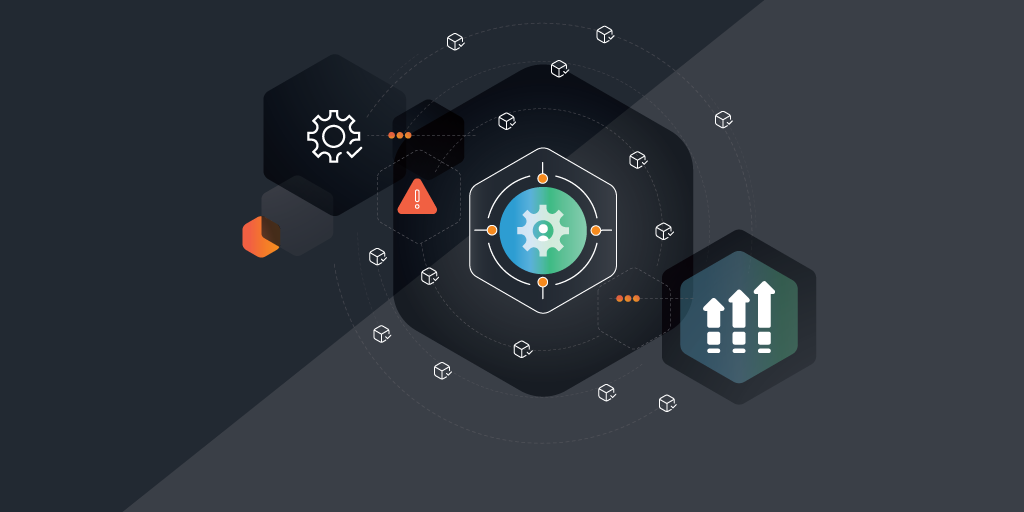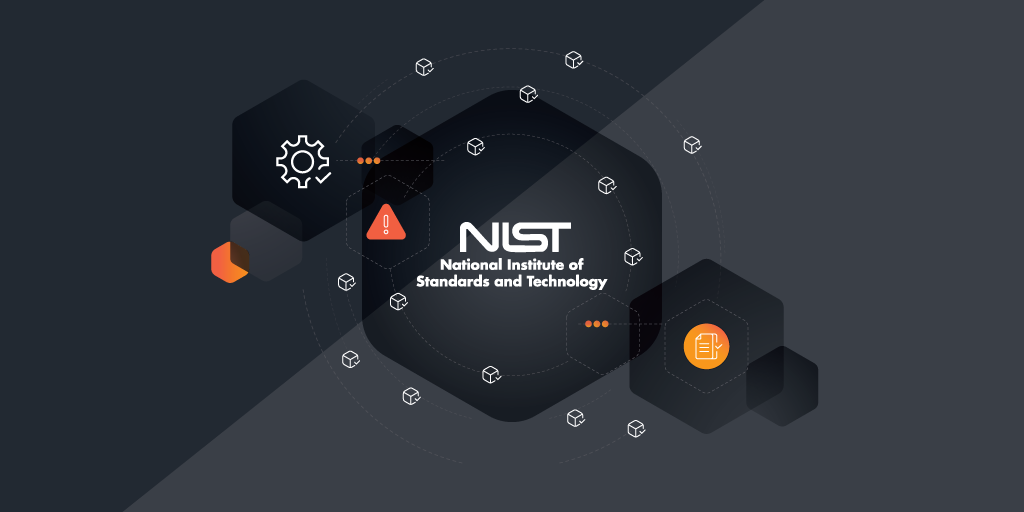
To be proactive with cybersecurity, you need to see it as more than a task, but a strategy. And it starts with a solid vulnerability risk assessment. If you’re the one responsible for keeping your organization’s IT infrastructure secure, you know it’s not just about running scans and hoping for the best. It’s about comprehensively analyzing risks and vulnerabilities. We know that the stakes are high. We also know that the key to staying ahead of threats is spotting weaknesses before attackers do.
Imagine your network is like a smart home. To keep it secure, you need to know every device, every connection, and where vulnerabilities might appear. This guide will help you discover actionable steps to troubleshoot issues and strengthen your network’s defenses.
With the right approach, you won’t just be patching holes; you’ll be building a fortress. By the end, you’ll have the insights you need to make confident, informed decisions about your security measures—because, in today’s world, it’s not just about preventing attacks, it’s about staying ahead of them.
Why Should I Prioritize Vulnerability Risk Assessments?
When resources are stretched and your security budget feels tight, it’s natural to question whether vulnerability risk assessments are worth the investment. After all, there’s always something demanding attention. But here’s the reality: skipping these assessments now could lead to far more expensive problems down the road.
A vulnerability risk assessment is about gaining a complete, top-down view of your entire security system. That’s the value of regular vulnerability risk assessments—they’re not just a precaution, they’re an essential part of a forward-thinking cybersecurity strategy. Think of it like regular maintenance for a high-performance vehicle—ignoring minor issues today could lead to a full breakdown tomorrow. These assessments provide you with the critical insights you need to proactively address vulnerabilities before they turn into costly security breaches. There are several ways a reliable risk assessment helps you enhance your security profile:
- Comprehensive View: Get a holistic understanding of your current security posture, beyond surface-level threats.
- Proactive Defense: Identify and fix vulnerabilities before they can be exploited by attackers.
- Resource Optimization: Allocate your security budget and manpower more efficiently by focusing on the highest-priority risks.
- Strategic Planning: Make informed decisions about where to invest in future defenses, ensuring your resources have maximum impact.
- Stay Ahead of Evolving Threats: Cyber threats are constantly evolving, and these assessments help you anticipate and mitigate risks before they escalate into crises.
Key Components of a Vulnerability Risk Assessment
A comprehensive vulnerability risk assessment consists of several essential steps, each one crucial for understanding the threats to your organization and determining how to best protect your assets. By following these steps, you’ll have a structured approach to your cybersecurity and you’ll remain proactive and strategic about your protection.
At its core, the goal of a vulnerability risk assessment is to reveal where your organization’s defenses are weak and which vulnerabilities could potentially be exploited by malicious actors. By identifying and prioritizing these weaknesses, you are better equipped to allocate your resources effectively and mitigate the most pressing risks.
This process goes beyond just detecting technical flaws. It includes understanding the potential impact of these vulnerabilities on business operations, gauging the likelihood of exploitation, and aligning your risk management efforts with your organization’s broader security strategy. From the discovery of assets to the mitigation of identified threats, each component of the assessment plays a vital role in safeguarding your network and data.
The key steps outlined below form the foundation of a successful vulnerability risk assessment, helping you build a security strategy that is both thorough and adaptable in the face of evolving cyber threats.
- Identifying and Categorizing Assets
The first step is gaining a comprehensive view of your network and identifying all connected assets. Asset discovery tools provide a detailed inventory of devices, both visible and hidden within your infrastructure. By categorizing these assets, you can prioritize those critical to your operations and ensure they receive the necessary protection. This includes assessing outdated software, unpatched systems, and conducting a thorough threat vulnerability assessment.
- Assessing Vulnerabilities and Potential Threats
Once your assets are mapped, the next step is identifying vulnerabilities across your systems. This includes assessing outdated software, unpatched systems, and other weak points that could be exploited by attackers. An evaluation of both internal and external threats ensures your defenses can withstand advanced cyberattacks.
- Evaluating the Impact and Likelihood of Risks
Not all vulnerabilities pose the same level of threat. Evaluating the likelihood of exploitation and the potential impact on your organization allows you to prioritize remediation efforts. Focusing on the most critical risks ensures that the most significant threats are addressed first, reducing potential damage.
- Asset Insights for Effective Risk Assessment
The value of vulnerability risk assessments lies in how well you understand your assets. By leveraging asset discovery and analysis tools, you can enhance your cybersecurity vulnerability assessment strategies.
- Leveraging Asset Discovery and Inventory Tools
Asset discovery tools provide a comprehensive overview of your network, identifying both authorized and unauthorized devices. This detailed inventory is essential for accurate risk assessment and allows you to focus on the assets that matter most.
- Gaining Visibility into Your IT Infrastructure
Visibility into your IT infrastructure is crucial for effective cybersecurity. The right tools provide complete visibility into all network-connected devices, including those often overlooked, such as rogue devices or shadow IT. This ensures that potential threats do not go undetected.
- Analyzing Asset Data to Identify Vulnerabilities
Analyzing asset data allows for the identification of vulnerabilities that may not be immediately apparent. This data-driven approach offers the insights needed to make informed decisions, allocate resources effectively, and strengthen your organization’s defenses.
The Role and Benefits of Asset Insights in Cybersecurity
To be effective, cybersecurity must be integrated into your organization’s overall strategy, starting with a thorough understanding of your IT assets. In this section, we’ll explore the importance of asset insights and the benefits they bring to your cybersecurity strategy.
Enhanced Visibility for Informed Decision-Making
The first and perhaps most fundamental benefit of asset insights is the enhanced visibility they provide across your entire IT environment. Visibility is the foundation upon which all other cybersecurity measures are built. Without a clear view of what devices, applications, and systems are connected to your network, it’s impossible to protect them effectively. Asset insights allow you to see everything within your network, from standard hardware like servers and workstations to less obvious assets such as IoT devices, software installations, and even virtual machines.
This level of visibility is invaluable when conducting a vulnerability risk assessment. Knowing precisely what you’re protecting enables you to make informed decisions about resource allocation, threat prioritization, and risk management. For example, if you identify that a particular segment of your network contains outdated software or unpatched systems, you can immediately prioritize those areas for remediation. This targeted approach not only saves time but also ensures that you’re addressing the most critical vulnerabilities first.
Moreover, visibility through asset insights helps you identify unauthorized devices or shadow IT systems that may have been added without proper oversight. Rogue devices can introduce significant vulnerabilities to your network, and having the ability to spot these immediately reduces your attack surface. In short, enhanced visibility equips you with the knowledge to defend against both known and unknown threats.
Comprehensive Asset Management for Risk Mitigation
In addition to visibility, asset insights offer a structured and comprehensive approach to managing your IT assets. This goes beyond merely cataloging devices; it involves understanding each asset’s role within the network, its security posture, and how it interacts with other assets. With this comprehensive view, you can conduct more accurate and effective risk assessments.
When you have a thorough inventory of your assets, you can categorize them based on criticality and exposure to threats. For example, you might classify a server containing sensitive customer data as a high-priority asset that requires additional layers of protection, while other less critical assets receive standard protection. This strategic categorization allows for better resource allocation, ensuring that your most valuable assets are always safeguarded.
Asset insights also contribute to effective lifecycle management. As assets age, they become more susceptible to vulnerabilities, especially if they no longer receive updates or patches from the manufacturer. By monitoring the lifecycle of each asset, you can proactively retire outdated systems before they become security risks. This preemptive approach prevents attackers from exploiting vulnerabilities in old or unsupported software and hardware.
Beyond this, the integration of asset insights into your cybersecurity framework enables you to automate various processes, such as vulnerability scanning and patch management. Automation reduces the manual effort involved in securing your network, making your vulnerability management processes more efficient and scalable.
Data-Driven Insights for Strategic Cybersecurity
One of the most significant advantages of asset insights is their ability to provide data-driven insights. In cybersecurity, data is power. The more data you have on your assets, the better you can understand your risk profile and tailor your security measures accordingly. Asset insights collect and analyze vast amounts of data from every device, application, and connection within your network, allowing you to spot patterns, trends, and anomalies that may indicate vulnerabilities or threats.
For instance, you may notice that certain devices are frequently flagged during vulnerability scans for the same issues, such as outdated software or unpatched systems. This recurring pattern suggests a deeper issue, such as a breakdown in patch management processes or a lack of enforcement of security policies. Armed with this data, you can address the root cause rather than simply treating the symptoms.
Data-driven insights also enable predictive analytics. By analyzing historical data on your assets and vulnerabilities, you can forecast future risks and prioritize preventive measures. For example, if you observe a trend of increasing malware attacks targeting specific software versions, you can proactively update or replace those systems before they become targets. This predictive capability helps you stay ahead of evolving threats, shifting your approach from reactive to proactive.
Furthermore, asset insights allow for the creation of detailed risk reports, which are invaluable for communicating with stakeholders. Whether you’re presenting to the C-suite, explaining risks to department heads, or reporting to regulators, having hard data to back up your recommendations increases credibility and ensures that cybersecurity remains a top priority within the organization.
Optimized Resource Allocation and Cost Efficiency
In an era where cybersecurity budgets are often stretched thin, efficient resource allocation is critical. Asset insights provide the clarity needed to optimize your spending, ensuring that your resources are directed where they will have the most significant impact. By understanding which assets are most vulnerable and which are most critical to your operations, you can focus your efforts—and your budget—on protecting what matters most.
For example, rather than applying the same level of security to every asset, you can use a tiered approach based on the asset’s importance and risk level. High-priority assets like financial databases or customer records might receive advanced security controls, such as encryption, multi-factor authentication, and continuous monitoring. In contrast, less critical assets may require only basic security measures. This targeted approach ensures that you’re not overspending on unnecessary security for low-risk assets, while also preventing under-protection of high-risk areas.
Asset insights also contribute to cost efficiency by reducing downtime and minimizing the impact of security incidents. When you have a clear understanding of your asset landscape, you can respond to threats more quickly and effectively, minimizing the disruption to your business. Additionally, the ability to automate routine security tasks, such as vulnerability scanning and patch deployment, reduces the need for manual intervention, freeing up your IT team to focus on more strategic initiatives.
By leveraging the data provided by asset insights, you can also conduct cost-benefit analyses of different security measures. For example, you can compare the cost of implementing a new security control against the potential financial impact of a data breach or system compromise. This approach ensures that you’re making informed, data-driven decisions that align with both your security goals and your organization’s financial constraints.
What is Asset-Based Risk Assessment?
Asset-based risk assessment is a highly targeted approach that identifies and manages your cybersecurity risks by focusing directly on the assets within your network. Instead of assessing risks in isolation or based solely on external threats, this method prioritizes your most critical assets. It asks a fundamental question: what are we trying to protect, and what are the specific risks to those assets?
The real power of asset-based risk assessment is in its sharp focus. It makes sure you target the areas where a breach would cause the most damage. In a world where budgets are tight and time is limited, this kind of precision is critical. You need to be smart about where to direct your attention, ensuring every dollar and minute spent on security counts.
With asset-based risk assessments, you zoom in on each asset—whether it’s hardware, software, sensitive data, or even key personnel—and evaluate how much it’s worth to your organization and how vulnerable it is to potential threats. The process kicks off by identifying which assets are critical. Then, you assess how exposed they are to cyberattacks. The more valuable and vulnerable the asset, the higher it ranks in your security priorities.
This approach takes cybersecurity out of the theoretical realm and grounds it in practical, actionable steps. For instance, say you have a server hosting sensitive customer data. Naturally, that server is a high-value asset. The next step would be to figure out what specific risks it faces—perhaps it’s running outdated software, lacks encryption, or has weak access controls. By homing in on these risks, asset-based assessments let you craft a defense strategy that’s laser-focused, ensuring your most valuable resources are protected in the smartest way possible.
Another major perk of this method is how it helps you prioritize your actions. Not every vulnerability is equally dangerous to your organization. Asset-based risk assessments look at each risk, weighing both the likelihood that it will be exploited and the potential impact if it is. This way, you can tackle the highest-risk issues first, making sure you’re addressing the most critical threats before they become costly problems.
At the end of the day, asset-based risk assessments cut through the noise. They give you clarity on which assets matter most, how they could be compromised, and what steps are needed to protect them. Not only does this strengthen your overall security, but it also boosts the efficiency of your risk management, helping you make more informed, strategic decisions about your cybersecurity efforts.
What are Some Other Risk Assessment Strategies?
While asset-based risk assessment is a highly targeted approach, there are several other risk assessment strategies that organizations can use to evaluate their security posture. Each method has its own strengths and is often chosen based on your organization’s specific needs, industry, or regulatory requirements. Below are some of the most widely used risk assessment strategies:
1. Threat-Based Risk Assessment
A threat-based risk assessment focuses on identifying and evaluating the potential external and internal threats that could compromise an organization’s assets. This approach emphasizes understanding the nature of the threats—whether they come from cybercriminals, insider threats, malware, or environmental factors like natural disasters.
Process:
- Identify specific threats that could target your systems.
- Assess the likelihood of these threats materializing.
- Evaluate the impact of the threat if it were to succeed.
This type of assessment is particularly useful in sectors where external threats are constantly evolving, such as finance or critical infrastructure. It helps organizations stay ahead of cybercriminals by anticipating their next moves and bolstering defenses where attacks are most likely to occur.
Strengths:
- Helps in proactive threat detection.
- Useful for dynamic environments with constantly changing threat landscapes.
Weaknesses:
- May overlook internal weaknesses not linked to external threats.
2. Vulnerability-Based Risk Assessment
A vulnerability-based risk assessment emphasizes discovering vulnerabilities within an organization’s infrastructure, software, and hardware that could be exploited. The focus is less on the nature of the threats and more on identifying weaknesses that need to be addressed.
Process:
- Use vulnerability scanning tools to identify flaws in your systems.
- Prioritize vulnerabilities based on severity (e.g., critical vs. low-risk vulnerabilities).
- Remediate or mitigate the most dangerous vulnerabilities.
Vulnerability-based assessments are essential for organizations in highly regulated industries, such as healthcare or government, where maintaining compliance with cybersecurity standards is critical.
Strengths:
- Offers a clear understanding of technical flaws.
- Helps in compliance with regulatory requirements.
Weaknesses:
- Lacks a broader understanding of the threat landscape.
3. Compliance-Based Risk Assessment
A compliance-based risk assessment focuses on ensuring that an organization meets specific regulatory and legal standards, such as GDPR, HIPAA, or the CMMC (Cybersecurity Maturity Model Certification). It involves evaluating whether the organization adheres to mandated cybersecurity controls and frameworks.
Process:
- Map your organization’s security measures to relevant compliance standards.
- Identify areas where your practices fall short of regulatory requirements.
- Develop an action plan to meet the necessary security controls.
Compliance-based assessments are vital in industries with strict regulations, like finance, healthcare, and defense. These assessments not only help avoid penalties but also build trust with customers and stakeholders.
Strengths:
- Ensures adherence to laws and regulations.
- Reduces the risk of legal penalties and fines.
Weaknesses:
- Can be narrowly focused on compliance rather than actual security needs.
4. Impact-Based Risk Assessment
An impact-based risk assessment emphasizes the consequences of a security breach or failure on business operations. Instead of focusing on the threats or vulnerabilities themselves, this method evaluates the potential damage a successful attack could have on the organization’s finances, reputation, and operations.
Process:
- Identify critical assets and evaluate the potential impact of a breach.
- Assign a financial value or other quantitative metrics to measure the potential damage.
- Prioritize mitigation strategies based on the severity of impact.
This approach is useful for organizations looking to understand the business risks associated with cybersecurity and aligning security investments with business objectives.
Strengths:
- Ties cybersecurity to business outcomes.
- Helps in aligning security priorities with business impact.
Weaknesses:
- May overlook technical flaws or external threats.
5. Qualitative Risk Assessment
A qualitative risk assessment uses subjective measures to evaluate risks. Rather than relying on hard numbers, this strategy assesses risks based on expert judgment, interviews, and experience. Risks are typically categorized as low, medium, or high, based on their perceived likelihood and impact.
Process:
- Gather input from cybersecurity experts and stakeholders.
- Use a risk matrix to rank risks by likelihood and impact.
- Assign priority levels to risks based on expert analysis.
This method is especially useful when precise data is unavailable, or when the focus is on broad organizational risks rather than technical specifics.
Strengths:
- Provides a high-level overview of risks.
- Flexible and adaptable to various organizational contexts.
Weaknesses:
- Can be subjective and may lack precise measurements.
6. Quantitative Risk Assessment
A quantitative risk assessment seeks to provide measurable data about the risks facing an organization. It uses metrics like the Annualized Loss Expectancy (ALE), Single Loss Expectancy (SLE), and Exposure Factor (EF) to assign a financial value to potential risks. This method is data-driven and requires more rigorous analysis.
Process:
- Collect data on past incidents and their financial impact.
- Use formulas to calculate the expected cost of future incidents.
- Make decisions based on quantitative data and return on investment (ROI).
This method is particularly useful for organizations that need to justify security spending to executives or boards. It offers a concrete way to demonstrate how security investments reduce financial risks.
Strengths:
- Provides measurable, data-driven results.
- Useful for cost-benefit analysis and budget allocation.
Weaknesses:
Requires accurate data, which can be difficult to obtain.
7. Continuous Risk Monitoring
Continuous risk monitoring is not a single assessment but an ongoing process of evaluating and responding to risks in real time. Rather than conducting risk assessments at set intervals, this approach involves constantly monitoring the environment for emerging threats and vulnerabilities.
Process:
- Use automated tools to continuously monitor network traffic, vulnerabilities, and threats.
- Integrate data from various sources (e.g., threat intelligence feeds, security analytics).
- Adjust security controls and policies dynamically based on real-time findings.
This strategy is particularly useful in industries with rapidly changing threat landscapes, like tech or finance. Continuous monitoring allows organizations to stay agile and respond to threats before they result in significant harm.
Strengths:
- Provides real-time insights into the risk landscape.
- Enhances the ability to respond to emerging threats quickly.
Weaknesses:
- Requires significant resources and sophisticated technology.
Get Your Asset Insights With Lansweeper
Lansweeper’s asset discovery solution enriches your assessment process with detailed contextual information about your network environment. Your IT team will have a more accurate picture of vulnerabilities, making them proactive in their response to potential threats. Start your free trial today!
Go Unlimited for 14 days
2 weeks of unlimited scanning
Start now. Use when ready
No card required
Access all features
5-minute onboarding


